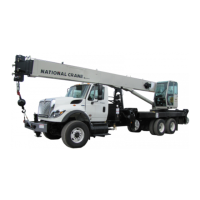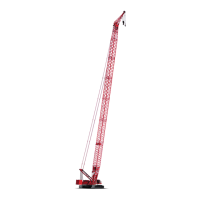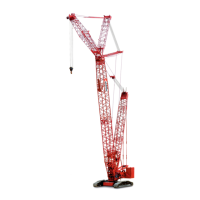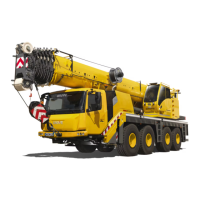1-6 1-21-2019 Control # 104-07
INTRODUCTION SERVICE MANUAL 1400A
Keep The System Clean
When removing components of a hydraulic system, cover all
openings on both the component and the crane.
If evidence of foreign particles is found in the hydraulic
system, flush the system.
Disassemble and assemble hydraulic components on a
clean surface.
Clean all metal parts in a nonflammable cleaning fluid. Then
lubricate all components to aid in assembly.
Sealing Elements
Inspect all sealing elements (O-ring, gaskets, etc.) when
disassembling and assembling the hydraulic system
components. Installation of new elements is recommended.
Hydraulic Lines
When disconnecting hoses, tag each one to ensure proper
identification during
assembly.
When installing metal tubes, tighten all bolts finger-tight.
Then, in order, tighten the bolts at the rigid end, the
adjustable end, and the mounting brackets. After tubes are
mounted, install the hoses. Connect both ends of the hose
with all bolts finger-tight. Position the hose so it does not rub
the machine or another hose and has a minimum of bending
and twisting. Tighten bolts in both couplings.
Due to manufacturing methods there is a natural curvature to
a hydraulic hose. Reinstall the hose so any bend is with this
curvature.
Electrical
Batteries
Clean the batteries with a solution of baking soda and water.
Rinse with clear water and dry. Clean the battery terminals
with fine sandpaper and coat the terminals dielectric grease.
Do not use a non-dielectric grease.
Remove the batteries If the machine is not used for an
extended period of time. Store the batteries in a warm, dry
place, preferably on wooden shelves. Never store on
concrete. A small charge should be introduced periodically to
keep the specific gravity rating at recommended level.
When disconnecting wires, tag each one to ensure proper
identification during re
assembly.
Connectors, Harnesses, Wires, and Connectors
Visually inspect all electrical harnesses, cables, and
connectors every month or 250 hours for the following:
• Damaged, cut, blistered, or cracked insulation.
• Exposed bare wires.
• Kinked or crushed wires and cables.
• Cracked or corroded connectors, battery terminals, and
ground connections.
If any the above conditions exist, evaluate and replace as
necessary.
The climate in which the crane operates affects the service
life of the electrical components. The climate zones are
defined in the table on page 1-6. Recommended
replacement of harness and cables is as follows:
• Climate zone C after 10,000 hours of service.
• Climate zones A and C with high ambient temperatures
and duty cycles after 8,000 hours of service.
• Climate zones D and E after 10,000 hours of service.
• Salt water conditions after 8,000 hours of service.
.
CAUTION
Disconnect batteries prior to working on the electrical
system.
Climate Zone Classification
Zone Classification
A (Tropical Moist) Latitude 15° - 25° North and South (All months average above 18° C [64° F])
B (Dry or Arid) Latitude 20° - 35° North and South (Deficient of precipitation most of the year)
C (Moist Mid-Latitude) Latitude 30° - 50° North and South (Temperate with mild winters)
D (Moist Mid-Latitude) Latitude 50° - 70° North and South (Cold winters)
E (Polar) Latitude 60° - 75° North and South (Extremely cold winters and summers)
Fo
r
Reference
Only

